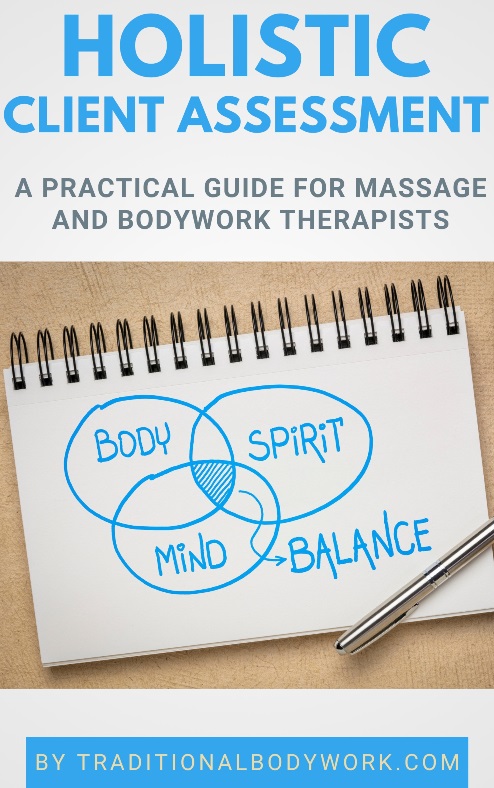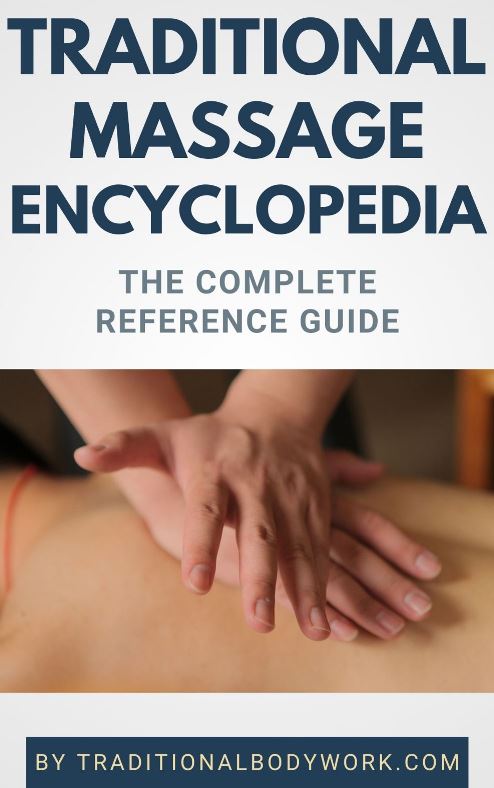
Knowledge about the medical history of a client can be of great importance to massage and bodywork therapists, that is, it can be crucial to come to both safer and more effective treatment plans and sessions.
One of the aims of knowing more about the client’s past illnesses or past complaints, and the current status of those, is to get an accurate idea of what techniques or exercises we can safely apply for a client and what not, and with what body parts or body systems we need to be careful.

In addition, the client’s medical history can also help therapists to better understand current complaints. That is, the therapist may establish a link i.e. relationship between a past situation, event or treatment and the complaints the client currently experiences, which demands a holistic approach of the therapist.
For instance, a past knee injury could have led to tighter or shortened hamstrings and calf muscles (an autonomous reaction of the body to stabilize and protect the knee). This could have become a habit of the body as to avoid pain or renewed injury. Over time, these tighter hamstring and calf muscles may have led to a structural downward-pull of the pelvic region causing low back problems.
Thus, in this particular example of the knee injury, the therapist can start to understand where the lower back pain originates and design an appropriate treatment plan which most likely doesn’t only involve relaxing and mobilizing the lower back, but also stretching and lengthening the hamstring and calf muscles.
In any case, many things come into view when it’s about a client’s medical history. For instance,
- have there been or are there any allergies (think of what creams or oils in a massage one can use or not);
- what past illnesses or health conditions have occurred (which may need to be taken into account as a possible massage or bodywork treatment risk);
- does the client still have any laboratory tests, medical reports, or medical imaging available;
- are there any artificial joints or transplants in the body (for instance, hip joint, knee joint, or kidney, which means there are maybe range-of-motion issues and/or we’ll need to be careful with those parts or totally avoid them in our treatment);
- is there a history of heart disease or high blood pressure (certain exercises and techniques cannot be performed or need to be limited);
- what kind of medication was and is currently used and for what (which can give an indication of underlying issues that are not visible but are either suppressed with pharmaceuticals or may form a treatment risk);
- did the client have any past injuries (for instance, broken bones or spinal injuries, which means we may need to be careful with certain body parts or specific techniques, or there might be compensations by other body parts);
- have there been surgeries (which, just like the above, means we may need to be careful with certain body parts or techniques, or there might be compensations by other body parts or organs);
- is there a history of substance abuse, and are there still any physical or mental consequences;
- is there a history of hospitalization;
- is there a history of mental health issues;
- what kind of treatments did the client have in the past and what for, and what was the result of those (think of medication, acupuncture, massage, herbal medicine, chiropractic, and so on);
- did the client have any growth and development issues, and if so, what is the current consequence of those;
The points of attention mentioned above are surely not exhaustive, but give a general idea of what therapists need to take into account before treating a client.

Most of the questions about the client’s medical history will already have been asked in a Client Intake Form, which typically is part of the Intake Assessment process.
Nevertheless, it’s a good idea to go through the questions and answers of the Intake Form together with the client to obtain more information i.e. details. Often, you will discover additional issues, such as details the client forgot to mention or which weren’t explicitly asked in the Intake Form.
For instance, a client may have filled out that they suffer from high blood pressure and take medication for it. So, this gives clues about the massage or bodywork techniques one should avoid.
Yet, what is the cause of the client’s high blood pressure? Is it because of structural anxiety connected to their job, a relationship, or past trauma? Is the client overweight? Or is there an underlying genetic cause or disorder?
As such, knowing more about the cause may help the therapist to better support this client, which depending on the cause may involve working on emotional release or so-called Catharsis, or perhaps giving additional exercises to combat overweight, and so on.
















